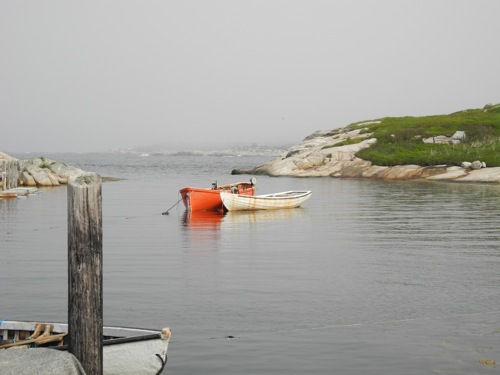
As our motorcoach headed back to Halifax for the final time, the song “Farewell to Nova Scotia,” playing over the coach’s speaker, caused me to reflect over the past 12 days.
My wife, Marcheta, and I were wrapping up a tour of the Canadian Maritimes with Nova Scotia-based Atlantic Tours filled with unforgettable natural beauty, fascinating history and culture, delicious seafood and a compatible group of travel companions from Australia, Canada, England, the United States and Scotland.
The Maritimes were high on my list of places to visit, but during the more than 21 years I served as executive editor of The Group Travel Leader’s family of publications, I was never able to work in a trip. As the senior writer, with a more flexible schedule, I jumped at the chance when I was offered this late-June trip.
Intro to the Maritimes
We arrived in Halifax in midafternoon and checked into our hotel, with the city’s historic 19th-century star-shaped Citadel towering above us across the street. We took a brief walking tour of downtown, past the Old Town Clock, a three-tier, octagonal tower erected in 1803 by Queen Victoria’s father, before meeting our group of a dozen other travelers and Atlantic Tours tour director Lisa Bullerwell at an evening reception.
As we departed Halifax the next day, Lisa explained that the term Atlantic Canada includes Newfoundland and Labrador, which we were not visiting, and that Canadian Maritimes refers to Nova Scotia, New Brunswick and Prince Edward Island.
“They are the three on this tour,” she said. “The first three days focus on the Bay of Fundy, which is known for having the highest tides in the world. Twice a day, the equivalent of all the water in all the freshwater rivers in the world flows in and out.”
We caught our first glimpses of the Bay of Fundy in the distance from the scenic Glooscap Trail, which passed wooded ridgelines; small farms; numerous purple, pink and white lupines dotting the roadside; and fields of wild blueberries.
Our first stop was the Joggins Fossil Cliffs.
“Some of the fossils found here have not been found anywhere else in the world,” Sarah Hillier, an interpreter at the site, told us. “The timeline here at Joggins is the Pennsylvanian, or Coal Age, period, 310 to 325 million years old. All the things in the cases were living 300 million years ago. It is the best place in the world to ‘see’ this period.”
After Hillier gave us the overview at the information center, she took us down a steep path to the cliffs, which are on the Bay of Fundy, and pointed out some examples of fossils of plants, reptiles and amphibians in the cliffs and on the rocky beach.
After leaving Joggins, we crossed into New Brunswick and proceeded to Shediac, where we boarded a lobster boat of Croisieres Shediac Bay Cruises and headed into Shediac Bay.
The crew demonstrated how they bring up lobster traps, and Captain Ron Cormier gave a humorous but informative overview of the lobster fishing industry and a demonstration of how to crack and eat a lobster. Then it was our turn to try out his instructions on lobster dinners.
“When you eat lobster, if you don’t have it on you somewhere, you haven’t done it right,” said Lisa.
I must have done something right.
After spending the night in Moncton, we drove a scenic route through southern New Brunswick to the Hopewell Rocks, towering rock formations that are among the Maritimes’ iconic images. The size of the Bay of Fundy tides struck home as we arrived at high tide; the water was nearly to the top of the four-story arches in the rocks.
“Tides at the rocks range from 32 to 40 feet. Today it is 38 feet,” said guide Jon Michael Keirstead. “It would fill the Grand Canyon 25 times.”
Several kayakers paddling beside the rocks in the chocolate-colored water helped put the tides’ size into perspective. At low tide, visitors can walk on the ocean floor beneath the massive rocks.
“We call it beautiful brown water, not dirty,” said Keirstead. “In the Fundy Bay, all the sediment and mud never have a chance to settle since it is always moving. There also is iron in the water. If you see the rocks and blue water, it has been photoshopped.”
We got another example of the power of the Bay of Fundy tides in St. John, our home for the next two nights. The Reversing Falls is a 14-foot drop in the St. John River near downtown. We arrived at low tide, when the river was churning rapidly over the drop as it headed into the bay. When we stopped by two days later at high tide, the force of the bay was so strong that it was pushing the river in the opposite direction.









